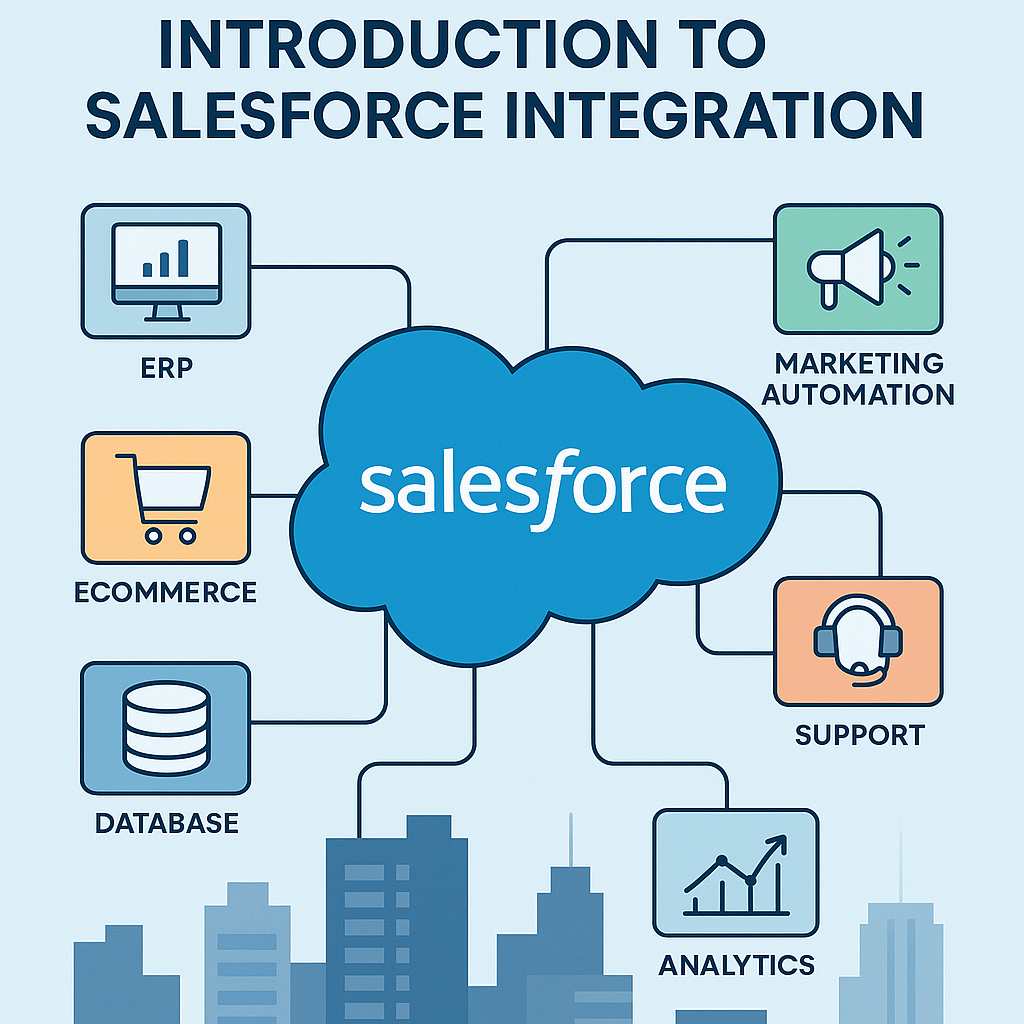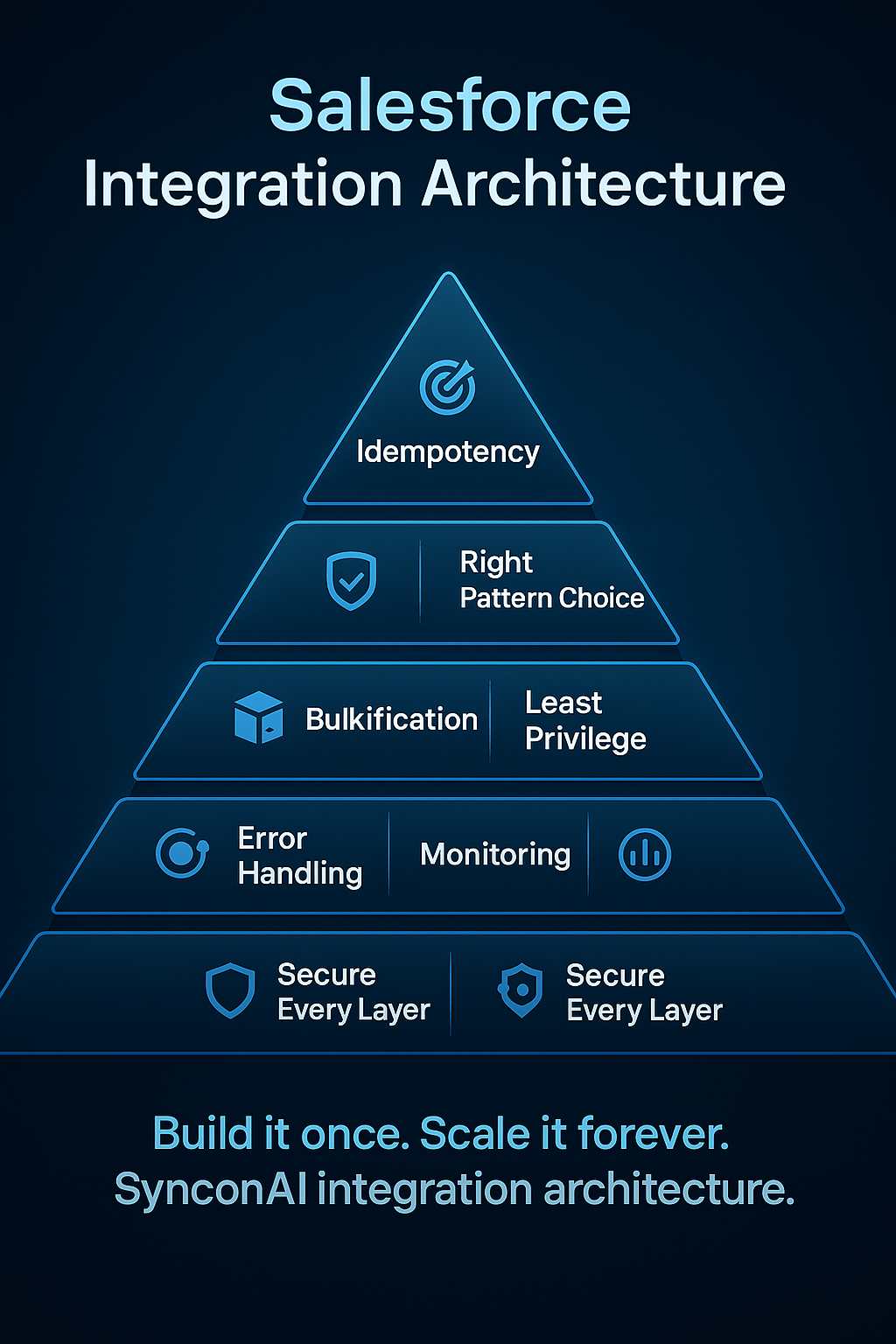Real-World Integration Use Cases
What Your Business Can Achieve Through Strategic Salesforce Integration
Overview
When systems work in silos, opportunities are lost — whether it's missed revenue, delayed service, or inconsistent customer experiences. Salesforce, as the hub of customer engagement, can only deliver its full potential when connected with the broader enterprise ecosystem.
This section illustrates common and high-impact use cases across industries, demonstrating how Salesforce can be integrated with external platforms to solve real business challenges. These examples represent the types of outcomes SynconAI helps clients achieve through scalable, secure, and intelligent integrations.
1. Telecommunications: Real-Time Service Activation
Business Scenario
In a typical telco environment, provisioning systems, billing platforms, and Salesforce often operate independently. This leads to delays in activating services once a deal closes in Salesforce.
Integration Opportunity
By integrating Salesforce with provisioning systems using Platform Events and Middleware, businesses can enable real-time order activation, automatically triggering workflows and status updates.
Potential Impact
- Eliminate manual coordination between sales and technical teams
- Reduce time-to-activation and improve customer onboarding
- Ensure accurate, real-time visibility of order progress in Salesforce
2. Manufacturing: ERP-Driven Quote-to-Cash
Business Scenario
Manufacturers frequently manage product catalogs, pricing, and inventory in ERP systems like SAP or NetSuite. However, quoting and customer interactions occur in Salesforce.
Integration Opportunity
Implementing a bi-directional sync between Salesforce and ERP systems allows pricing, availability, and order updates to flow seamlessly across departments. Salesforce CPQ can be extended to reflect real-time ERP data.
Potential Impact
- Accurate quotes based on live ERP data
- Faster, cleaner order processing
- Improved sales-to-fulfillment alignment
3. eCommerce & DTC: Unified Customer Data
Business Scenario
In fast-moving eCommerce businesses, platforms like Shopify manage customer profiles, orders, and inventory. But customer service and sales teams work inside Salesforce.
Integration Opportunity
Synchronizing customer, order, and fulfillment data from Shopify to Salesforce enables a true 360-degree customer view. Combined with marketing tools like Klaviyo or HubSpot, businesses can drive intelligent engagement based on purchase behavior.
Potential Impact
- Enhance customer support with full purchase history
- Personalize outreach and re-engagement campaigns
- Improve retention and repeat purchase metrics
4. Field Service & Mobile Workforce Enablement
Business Scenario
Field service technicians often use third-party mobile apps to record job details, while dispatch and billing operations reside in Salesforce Field Service.
Integration Opportunity
Integrating mobile field apps with Salesforce using REST APIs and Change Data Capture (CDC) can automate job updates, sync images and notes, and trigger post-service workflows.
Potential Impact
- Real-time SLA tracking and job visibility
- Streamlined billing and technician feedback loops
- Increased technician efficiency and accountability
5. Financial Services: Live Analytics & Data Governance
Business Scenario
Salesforce captures critical data — such as transactions, account changes, and service requests — but reports often rely on delayed exports to data warehouses.
Integration Opportunity
Using CDC + Streaming Architecture, Salesforce can push real-time updates to platforms like Snowflake or BigQuery, enabling live dashboards and analytics in Tableau or PowerBI.
Potential Impact
- Immediate visibility into high-value account activity
- Improved risk and compliance monitoring
- Elimination of batch ETL delays and manual data handling
Bonus Use Case: Healthcare Appointment Systems
Scenario
A healthcare organization manages bookings in a third-party scheduling system but uses Salesforce Health Cloud for patient engagement.
Integration Opportunity
Salesforce can consume appointment data via External Services or REST APIs, updating patient profiles and enabling automated pre- and post-visit communication.
Outcome Potential
- Centralized patient engagement tracking
- Improved staff coordination and follow-ups
- Better patient satisfaction metrics
Summary
- Operational efficiency through automation
- Data accuracy across business-critical systems
- Real-time insight for decision-makers
- Exceptional customer experiences at every stage
Whether your goal is to modernize legacy systems, enhance mobile field operations, or bring eCommerce and CRM into alignment — SynconAI can architect, build, and scale the integration solution to make it happen.
“With the right integration strategy, Salesforce becomes not just a CRM — but the command center of your enterprise.”














